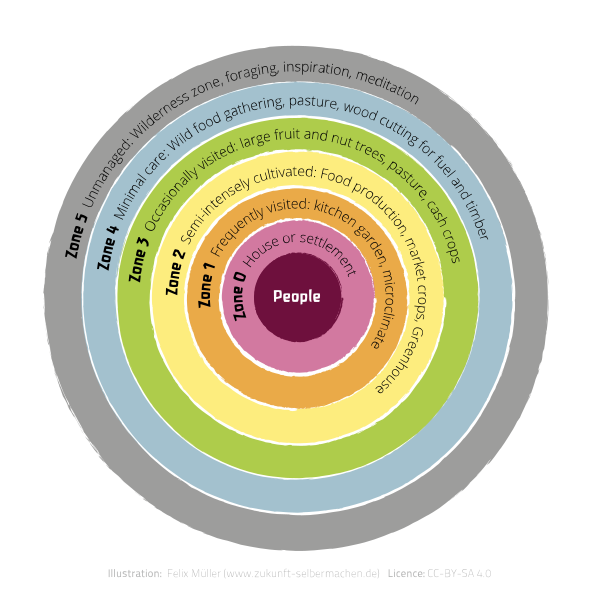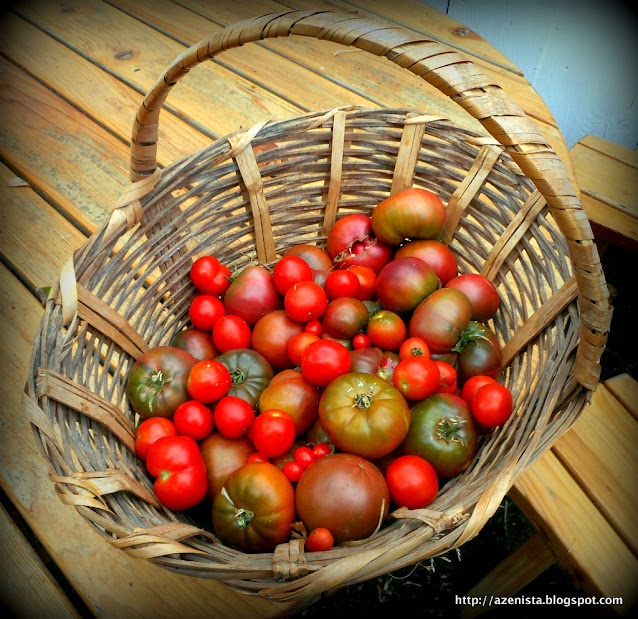I'm a bit of a
Murray Bookchin bunny, as may be divined by perusing the link at the bottom of this rant. Please bear with me.
In the 1970s and 1980s I was a member of a forestry services cooperative,
The Hoedads, Inc., as recounted in my book,
Iron Buddhas. While our initial contract bid bonding was put up by the founders by attaching liens on their real estate, we capitalized our bonds and other costs after the first year by docking ourselves fifteen percent on our individual earnings, meaning that those who earned more were subsidizing those who earned less; but we did not mind that as everyone's fifteen percent pooled together made bidding for work possible for all, including those who earned most.
At first much of the work was done by piece. Say replanting a clear cut grossed us ten thousand dollars and required fifty thousand trees. Each seedling was worth twenty cents, so a planter who put in one thousand trees made two hundred dollars that day, less fifteen percent, while a planter who put in two hundred grossed forty dollars. Fifteen percent out of that did not leave them much to live on, even in those days, especially for such bone-bruising work. Yet these were the very people who, for various reasons having to do with human nature, often found themselves planting in the most unplantable and dangerous ground.
Some of what we called the "low-rollers" accordingly gave up and went away; but many contracts stipulated a minimum crew size in an effort to guarantee that the clear cuts would be reforested in a timely manner (before the end of the rainy season). In an effort to retain them and not lose work due to an underpopulated roster, the crews (each of which was autonomous in its internal governance) entertained solutions.
It was to be expected that the low-rollers proposed switching to an
hourly wage. That would certainly be to their advantage, though they could argue both their presence and their patience with unproductive ground (which could not be skipped over or the work would pay zero) as having value, as well as pointing out that they would now be paying a full share of the capitalization.
This, some other crew members (generally the high-rollers) saw as unacceptable. The one to two hundred dollars per day that they were bringing in to their families and farms (as migrant labor who had successfully cut out the "middleman") was vital them and the principal reason for their presence. Making, say, seventy dollars for a day's work in which they had planted a hundred and forty dollar's worth of the trees galled them.
The company operated on the basis of
Robert's Rules of Order, and while majority vote had brought everyone a long way, there was the very real danger that in this matter of the distribution of earnings, a vote for either position could result in the disaffected parties departing, leading to a defaulted contract and considerable loss of earnings all round.
A compromise was proposed, in which the treasurer would calculate each crew member's earnings by tree total and again by the hour, then average the two methods to calculate the paycheck. This was called half by the share and half by the tree, or Half & Half. One crew even named itself for this innovation.
A low-roller might make sixty-six dollars in a day instead of fifty, and a high-roller might make eighty-one instead of a hundred, depending on individual totals, gross tree totals for the unit (clear cut or shelterwood), and unit price.
This practice, on my own crew, was voted on, with the amendment that the crew as constituted upon arrival at the landing could decide to amend the ratio after seeing the unit together -- say, 1/4 by the share, 3/4 by the tree. This was a lot of work for the treasurer but deemed an acceptable sacrifice.
The motion passed.
The crew, and several other crews, had survived a crisis by identifying a policy where two apparently irreconcilable parties could, while agreeing to disagree, attain part of what they wanted and move forward, rather than voting on their own initial positions and then imposing policy from the majority upon the minority and risking a permanent and disabling rift.
All this was an exercise in
workplace democracy, and it was carried out by
socialists and
libertarians choosing to work together toward a common goal. The shared commitment that pulled everyone through was a strong distaste for, and distrust of, authority.
Oh, wait! Some readers might say; aren't socialists authoritarian? The low-rollers wanted to confiscate some of the earnings of the high-rollers and give it to themselves! Isn't that authoritarian?
Well, any action by a living being or group of beings must proceed from some autonomous entity, whether its locus is in the individual or in some or all; you cannot effectively get fifteen workers to lay out seedlings on a grid on a slick and uneven sixty-percent slope in a driving rain without communicating (and,
with permission, imposing) a vision of how it is to be done.
The usual method in our industry was for a sole proprietor, partnership, or limited liability corporation to hire workers and tell them what to do, paying them to do it out of the gross the workers earned while retaining some portion for themselves. Direction and control thus comes from "above" and resides in property rights (this is
my company); the hierarchy thus established reaps the earnings of all and for all, but (usually) disproportionally to itself (profit) despite who really knows how to do what, or does it, on the ground.
They had the consent of their workers, in exchange for relatively low but stable wages, for what they were doing, but there was generally an element of theft.
Nothing is the actual equivalent of something of a different kind. By this I mean that wheat is not corn, and leather is not steel. Interest accrual is not labor.
Money is none of the above. All transactions have a component in which someone subsidizes someone. This is what is meant when some say there is socialism for the rich as well as socialism for the poor. Under authoritarian structures such as corporations or oligarchies, socialism for the rich is more common than socialism for the poor, as anyone might expect from a study of human nature. Yet the low-rollers do perform a service to the high-rollers in labor, as we have seen above; add capitalism and you will see that the low-rollers also subsidize the children and the grandchildren of long-dead high-rollers, as well as those of thieves and pirates who can afford good lawyers.
Returning some proportion of that subsidy to those who have helped generate it makes good business sense. They will now have something to spend, helping the economy, instead of going off to die under debt or a bridge somewhere, or adding to the burden of a strained and much maligned welfare system. Even then, as the poor become the homeless, investing in the well-being of all benefits all.
The rich sometimes become the homeless, though they seldom see it coming, just as the able become the disabled, and who are we to decide which among them is worthy to receive assistance in the hope that they may regain some measure of productivity? Meanwhile, they will
spend that assistance.
There are always those who forget the ancient story of
the goose and its magnificent eggs.
I mentioned capitalism, but I'm inclined to think it's only one way of fleecing the low-rollers, and I think a stable society with a high level of well-being (goose not killed) follows upon our maintaining vigilance against all fleecers.
The private-property libertarians in the Hoedads were faced with a different structure than the authoritarianism most often associated with capitalism. They had more power over themselves in context than they would have had working for a contractor, but
so did everyone else. Managers (the "foreperson" as we called them) were elected on the spot for the day and earned a share only, more than the low-rollers and less than the high-rollers. The workers were otherwise equal in voice to them and to each other, regardless of productivity, religion, sex, race, sexual preference, or hygiene. Nothing was ever perfect, as there is no such place as Utopia; yet we all had self-respect and mutual respect and generally a very high level of morale. It was the best years of most of our lives.
This was
social democracy in the raw, and I think quite applicable to the ills of modern society.
It can't, perhaps, achieve everything but it can do much.
All the time now, especially in the United States, there is increased polarization of right versus left on issue after issue that seemingly cannot be resolved, even by the vote,
even by edict of the Supreme Court. Without an understanding of the ills brought about by
authoritarianism (particularly
externalization), to which both the right and the left have fallen prey, we will continue our
slide toward the abyss.
By choosing workplace democracy -- quitting jobs in businesses or entities which refuse to adopt a democratic structure and banding together to create businesses or entities that embody a democratic structure -- we can
take a step toward regeneration of ethical treatment of ourselves, those around us, everyone in the world (many of whom the USA is currently bombing for oil), and the biosphere itself (resulting in clean water, air, soil, oceans and food for all sentient beings).
Externalities are a major consequence of authoritarianism. Worn out bodies of contractor treeplanters tended to be made the responsibility of the workers and not their bosses. Externalities ultimately create extinction. Externalities are a byproduct of industrialism. Modern industrialism is authoritarian and represents socialism for the rich, both in capitalist and so-called socialist regimes. Government tends to enslave itself, via the taking of bribes, to this authoritarianism. Government thus winds up protecting the “right” of industrialism to externalize costs and subsidize itself at the expense of labor and everyone and everything else.
Regime change is called for -- one of the best, because most peaceable, ways to begin to achieve this, is by choosing to work for one another, both in trades and in nonprofits, cooperatively rather than for "The Man."
Lefties, clear your heads; the Right is aggravating and even dangerous yet is not your enemy but only your enemy's troll.
If you are authoritarian the Right could say the same of you. Here is your homework (don't worry, it's short):
https://en.wikipedia.org/wiki/Rojava
There is much to do, but it can be done incrementally and many of us live where we might not even be taken out and shot for it. Lucky us.



















































